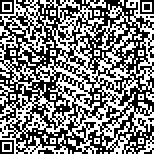戴慧寒,高庆春,黄如训.大脑中动脉血流变化在脑卒中运动功能康复预测中的价值[J].中华物理医学与康复杂志,2004,(8):
扫码阅读全文

|
| 大脑中动脉血流变化在脑卒中运动功能康复预测中的价值 |
|
| |
| DOI: |
| 中文关键词: 脑梗死 脑血流 康复 |
| 英文关键词: Cerebral infarction Cerebral blood flow Rehabilitation |
| 基金项目: |
|
| 摘要点击次数: 3335 |
| 全文下载次数: 4290 |
| 中文摘要: |
| 目的探讨大脑中动脉的脑血流变化,对脑梗死患者上肢运动功能康复治疗效果的预测价值及其机理。 方法68例脑梗死偏瘫患者,治疗前用TCD测定被动运动肘关节时双侧大脑中动脉血流速度后,进行12周康复治疗。并在治疗前、治疗后6周和12周时用Fugl-Meyer量表评定患侧上肢运动功能。根据12周后运动功能评分,分为A组、B组及健康对照组(C组),分别与双侧大脑中动脉血流速度进行比较。 结果A组和B组治疗前上肢Fugl-Meyer量表得分近似,而于12周时B组得分明显高于A组(P<0.05)。两组脑梗死患者在被动运动健侧肘关节时大脑中动脉的血流变化和健康对照组类似,仅表现为健侧大脑中动脉血流速度增快(A组:9.25%±1.99%,B组: 9.45%±1.33%);而被动运动患侧肘关节时,却表现为双侧大脑中动脉血流速度明显增快(A组:健侧6.07%±1.35%,患侧9.48%±1.84%。B组:健侧9.86%±1.78%,患侧10.11%±1.88%);而且健侧大脑中动脉流速增快的程度,B组明显大于A组(P<0.05)。康复12周时上肢的Fugl-Meyer评分,与双侧大脑中动脉血流速度增快的比例均呈明显正相关(P<0.05)。 结论康复治疗前瘫痪肢体肘关节被动运动时脑血流的激活程度,对预测患者的康复效果有一定的作用。其机理与皮质功能重组有关。 |
| 英文摘要: |
| Objective To explore the value cerebral blood flow in prediction of motor recovery of stroke patients. MethodsAfter evaluating the cerebral blood flow velocities of bilateral middle cerebral arteries with TCD during passive elbow movement, 68 patients with cerebral infarction were treated by rehabilitation therapy. The motor function of upper limbs was evaluated with Fugl-Meyer before and after 6,12 weeks of treatment. The patients were divided into groups A and B according to the Fugl-Meyer scales score of the paralytic upper limb at 12 weeks and the changes of cerebral blood velocities were compared between the two groups. ResultsThe score of upper limb motor function were not different between group B and A before the treatment, but the score of group B was significantly higher than that of group A (P<0.05) after 12 weeks of treatment. Patients with cerebral infarction all revealed increased contralateral cerebral blood velocity was observed when moving the uninvolved elbow (group A 9.25%±1.99%, and group B 9.45%±1.33%)in patients, while increased bilateral blood velocities observed when passively moving the involved paralytic elbow (the unaffected side 6.07%±1.35% and the affected side 9.48%±1.84% in group A, the unaffected side 9.86%±1.78% and the affected side 10.11%±1.88% in group B). The blood velocity in ipsilateral MCA of the paralytic limb increased significantly in group B as compared with that of group A (P<0.05). The scores of motor function of paralytic upper limbs at 12 weeks after treatment correlated positively with increased bilateral cerebral blood velocities (P<0.05). ConclusionThe activation levels of cerebral blood flow as related to movement of the involved upper limb of stroke patient can roughly predict the degree of motor functional gain from rehabilitation. |
|
查看全文
查看/发表评论 下载PDF阅读器 |
| 关闭 |